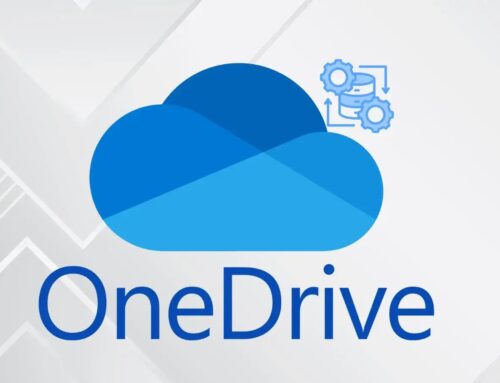
Critical Zoom Clients for Windows Vulnerability Lets Attackers Escalate Privileges
Critical Zoom Vulnerability: A Deep Dive into CVE-2025-49457
The security landscape is constantly shifting, and even the most ubiquitous software can harbor critical vulnerabilities. Recently, Zoom disclosed a significant flaw affecting multiple Windows-based clients, designated as CVE-2025-49457. This vulnerability, detailed in bulletin ZSB-25030, carries a CVSS score of 9.6, classifying it as critical. Such a high score indicates a severe impact on confidentiality, integrity, and availability, making immediate attention crucial for all Zoom for Windows users.
At its core, CVE-2025-49457 is an Untrusted Search Path vulnerability. This type of flaw can be exploited by attackers to achieve privilege escalation, essentially gaining unauthorized control over a user’s system.
Understanding the Threat: Untrusted Search Path Vulnerabilities
An Untrusted Search Path vulnerability occurs when an application searches for an executable file (like a DLL) in a location that an attacker can control. Instead of looking in secure, predefined paths, the application might consult insecure directories first. If an attacker places a malicious file with the expected name in one of these less secure locations, the application could inadvertently execute the attacker’s code instead of the legitimate software component.
In the context of the Zoom vulnerability, this means an attacker could trick the Zoom client into loading and executing a malicious library during its operation. This execution would occur with the privileges of the Zoom client, which, if running with elevated permissions (a common scenario due to installation requirements), could lead to a complete system compromise.
Impact and Severity: Why a 9.6 CVSS Score Matters
A CVSS score of 9.6 is remarkably high and signifies a severe security risk. This score is calculated based on several factors, including:
- Confidentiality Impact: An attacker could access sensitive user data, including meeting content, chat logs, and potentially other information stored on the compromised system.
- Integrity Impact: The attacker could modify, corrupt, or delete data on the system, disrupting operations and potentially injecting malicious code into other applications.
- Availability Impact: The attacker could render the system inoperable, leading to denial-of-service conditions or complete system takeover, preventing users from accessing their resources.
- Exploitability: Given the nature of Untrusted Search Path vulnerabilities, exploitation can often be achieved with moderate to low complexity, making it a viable target for malicious actors.
The combination of these factors paints a grim picture. A successful exploit of CVE-2025-49457 could allow an unprivileged attacker to gain administrator-level access, effectively owning the affected Windows machine.
Affected Zoom Clients for Windows
While the specific versions vulnerable were not detailed in the provided snippet, it’s safe to assume that users running older or unpatched versions of Zoom on Windows are at risk. This includes various desktop clients and potentially certain specialized versions used in enterprise environments.
Remediation Actions and Mitigation Strategies
Given the critical nature of CVE-2025-49457, immediate action is paramount. The primary and most effective remediation is to update your Zoom client.
- Update Your Zoom Client Immediately: Ensure all Zoom for Windows installations are updated to the latest, patched version. Zoom typically pushes updates automatically, but it is prudent to manually check for and apply updates.
- Principle of Least Privilege: While not a direct fix for this vulnerability, adhering to the principle of least privilege can limit the impact of successful exploits. Users should run applications, including Zoom, with the fewest necessary permissions. Avoid running Zoom with administrator privileges unless absolutely required.
- Endpoint Protection: Ensure robust endpoint detection and response (EDR) solutions are
active and up-to-date on all Windows machines. These tools can often detect and prevent
malicious behavior associated with privilege escalation attempts, even if an initial
vulnerability is exploited. - Security Awareness Training: Educate users about the dangers of downloading and
executing suspicious files, as social engineering tactics are often used to deliver
malicious payloads that could leverage vulnerabilities like this.
Tools for Detection and Mitigation
| Tool Name | Purpose | Link |
|---|---|---|
| Zoom Client Updates | Official Patch for CVE-2025-49457 | Zoom Download Center |
| Endpoint Detection and Response (EDR) Solutions | Detect and respond to post-exploitation activities and anomalous behavior | (Vendor Specific – e.g., CrowdStrike, SentinelOne) |
| Vulnerability Scanners (e.g., Nessus, OpenVAS) | Identify unpatched Zoom installations across networks | Nessus / OpenVAS |
| Microsoft Defender for Endpoint | Built-in EDR for Windows environments | Microsoft Learn |
Conclusion
The disclosure of CVE-2025-49457 by Zoom serves as a stark reminder that no software is entirely immune to vulnerabilities. An Untrusted Search Path flaw with a CVSS score of 9.6 poses a significant threat, capable of leading to full system compromise and data breaches. Timely patching is the most critical defense. Organizations and individual users must prioritize updating their Zoom for Windows clients to safeguard their systems, maintain the integrity of their data, and ensure the privacy of their communications.





